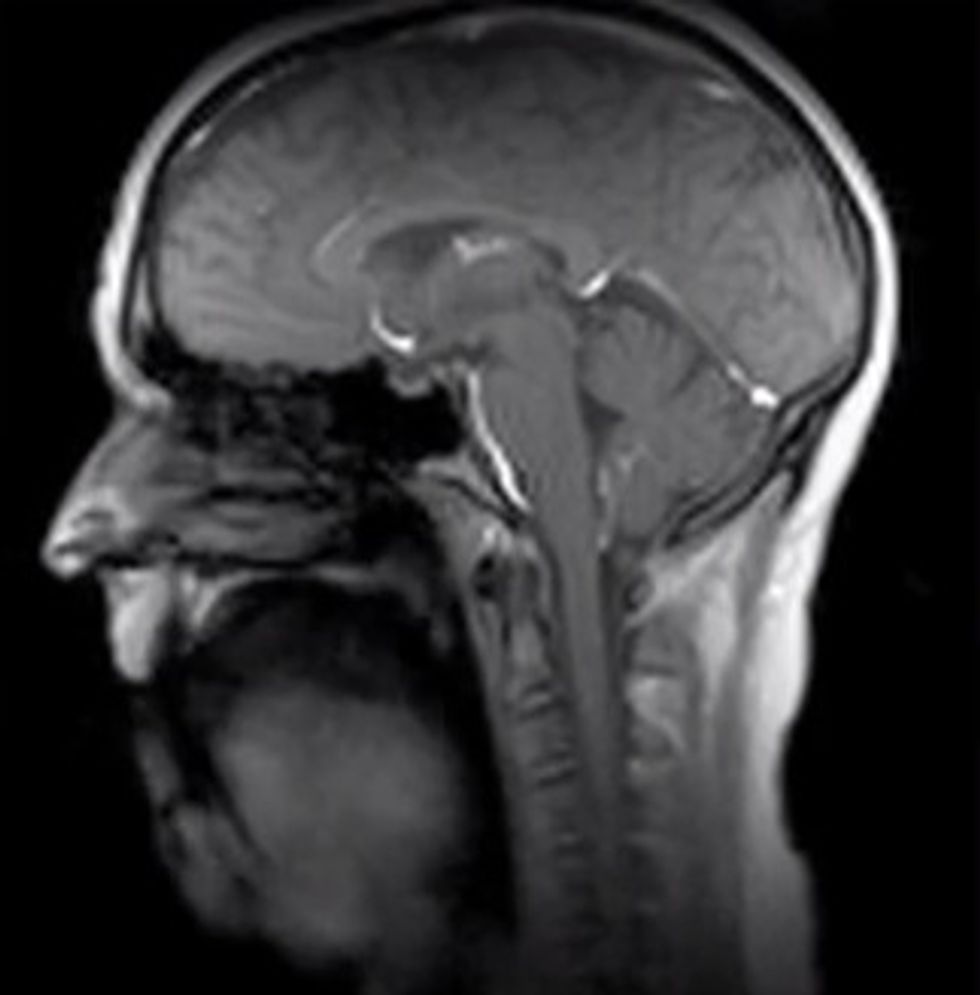
© 2025 Blaze Media LLC. All rights reserved.
"It’s just incredible."
Aaron Johnson sang in Chicago choruses for 10 years. Now, he's doing more than just belting out tunes: He's analyzing how the human voice works and how it ages.
"The fact that we can produce all sorts of sounds and we can sing is just amazing to me," Johnson with the Beckman Institute and an assistant professor in speech and hearing science at the University of Illinois, said in a statement. "Sounds are produced by the vibrations of just two little pieces of tissue. That’s why I’ve devoted my whole life to studying it: I think it’s just incredible."
Recently, Johnson and his colleagues were able to watch the 100 or so muscles involved in singing at an unprecedented level using a "super-fast" MRI technique.
Just watch the MRI video of Johnson singing "If I Only Had a Brain" from the "Wizard of Oz":
The technique, which allows researchers to capture MRI video at 100 frames per second instead of the more typical 10 frames per second, was developed by Beckham Institute engineering professor Zhi-Pei Liang's group.
"The technique excels at high spatial and temporal resolution of speech — it’s both very detailed and very fast," the institute's technical director Brad Sutton said in a statement. "Often you can have only one these in [magnetic resonance] imaging. We have designed a specialized acquisition method that gathers the necessary data for both space and time in two parts and then combines them to achieve high-quality, high-spatial resolution and high-speed imaging."
The technology, he said, allows researchers to use MRI in a way they couldn't have a couple of years ago.
Johnson's research seeks to better understand how the "neuromuscular system and larynx change and atrophy as we age," he said. Then, he wonders if any sort of vocal training or other techniques could reverse the aging effects.
"In order to do this, I need to look at how the muscles of the larynx move in real time," he said, explaining how the MRI video comes in handy.
The researchers described this faster MRI technique in the journal Magnetic Resonance in Medicine.
(H/T: Gizmodo)
Want to leave a tip?
We answer to you. Help keep our content free of advertisers and big tech censorship by leaving a tip today.
Want to join the conversation?
Already a subscriber?
more stories
Sign up for the Blaze newsletter
By signing up, you agree to our Privacy Policy and Terms of Use, and agree to receive content that may sometimes include advertisements. You may opt out at any time.
Related Content
© 2025 Blaze Media LLC. All rights reserved.
Get the stories that matter most delivered directly to your inbox.
By signing up, you agree to our Privacy Policy and Terms of Use, and agree to receive content that may sometimes include advertisements. You may opt out at any time.





